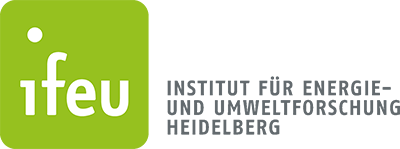Greywater Study

The Rapid Planning Project study Decentral Greywater Treatment scientifically tests the potential of a decentralized low-cost technique to treat and recycle domestic greywater as an interim or hybrid technology option for the upgrading of Agatare, an informal settlement in Rwanda’s capital Kigali. Thereby yet unknown planning-relevant data on domestic greywater volume, composition and management practices are collected. The results contribute to the Informal Settlement Upgrading Program of the City of Kigali and the World Bank. The freshwater supply within the study area is centrally organized. Yet water supply shortages and rising costs make water a valuable and increasingly demanded resource. Wastewater disposal is not centrally organized. A citywide sewer connection to a central sewage treatment plant is not economic due to low wastewater volume, willingness to pay and hilly topography. With the predominant use of pit latrines (no water flush) in Agatare (WBG 2017), the largest share of the generated wastewater is greywater. In contrast to blackwater (sewage from toilets) and kitchen wastewater (high fat content), greywater is little contaminated, fecal-free wastewater from body hygiene, laundry and cleaning (EN 12056-1). Untreated greywater is discharged informally into drainages and pits to an unknown extend and causes pollution and hygiene risks to the groundwater and wetlands including the food production area of Agatare. Decentral recycling of greywater offers a notable economic potential to reduce environmental pollution and hygiene risks and thereby increases the availability of non-potable water uses (irrigation, cleaning, toilet flush) and alleviates the freshwater demand.
Two Decentral Greywater Treatment pilot systems were developed and built out of local materials on-site in cooperation with local stakeholders (residents, NGOs, craftsmen) and operated by the residents since September 2016. The low-tech system is gravity-fed (no electricity) and has a modular design to enable upscaling to different household sizes. The systems are evaluated scientifically throughout more than six months, in contrast to similar projects which have so far lacked long-term scientific evidence of their performance. Monthly chemical and microbiological analyses of the in- and outlet of the greywater treatment pilot showed a successful reduction of the pollution indicators: Chemical Oxygen Demand (COD) -96%, Fecal Coliforms (FC) -99.88%, Total Suspended Solids (TSS) -98%, Nitrogen (N) -85% and Phosphorous (P) -67%. Thereby the output water quality complies with Rwandan and international discharge tolerance limits (RSB 2009; BGBl 2016) and the WHO (2000) limit of FC for reuse for irrigation. About 1 m3of purified non-potable water becomes available per household per month for cleaning and for irrigation of a pilot kitchen garden, resulting in water savings and support of value-adding urban food production. The data from the pilot systems, a survey of 293 households on domestic greywater management and the GIS mapping of 303 informal greywater discharge points enabled the mass flow analysis and environmental impact assessment for Agatare: annually approx. 20,000 m3 greywater (40% of total generated greywater) containing ca. 8.7 t COD, 22,600*109 Cfu FC, 2.2 t TSS, 0.3 t N and 0.1 t P are discharged via drainages into the agriculturally used wetlands.
Runtime
September 2014 – December 2019
